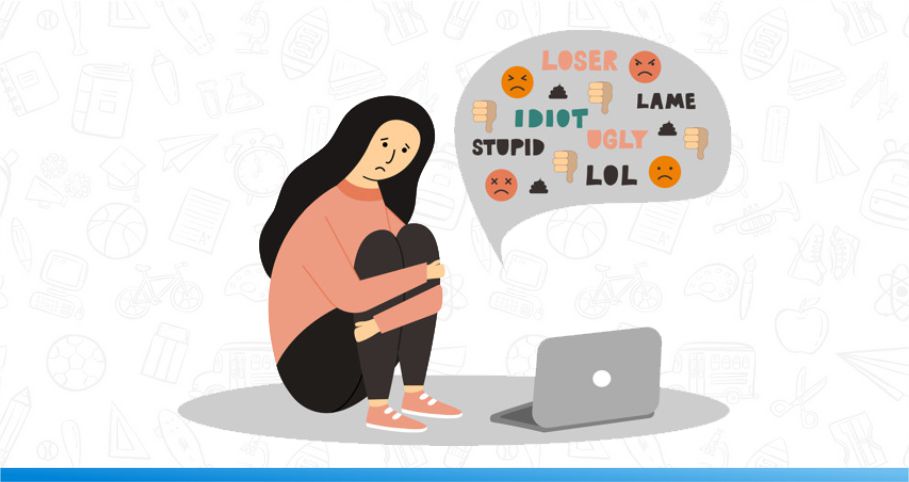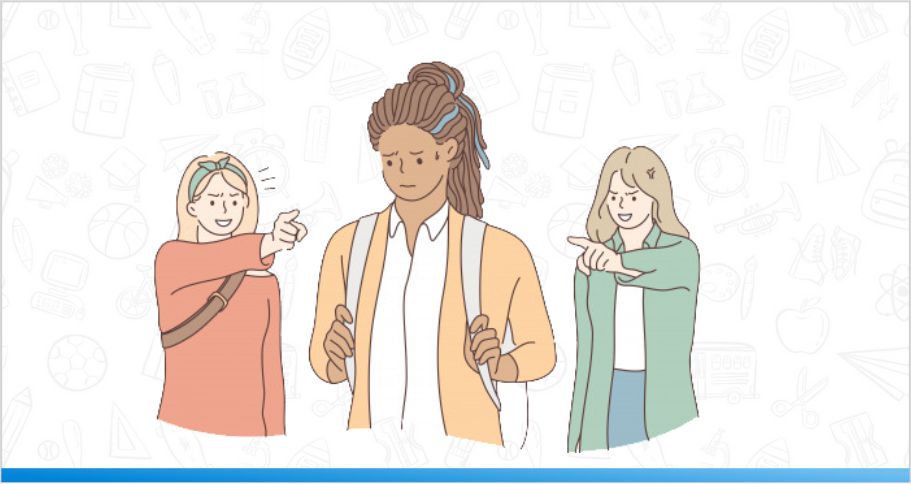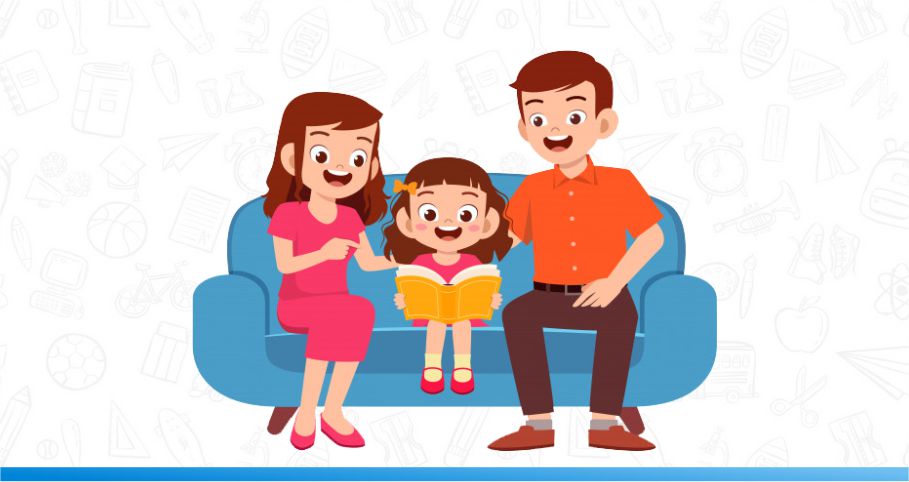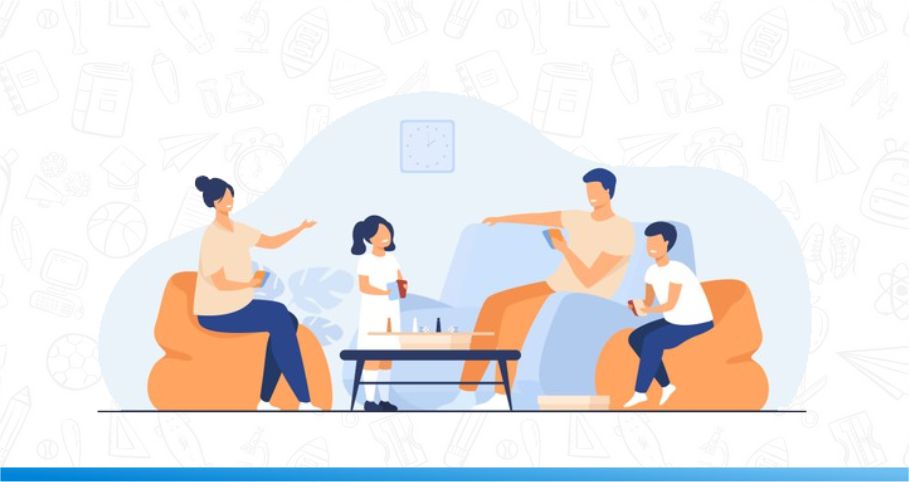Help Your Child Deal with Peer Pressure
By orchidadmin |
Date 05-09-2023

Table of Contents
Admissions Open for
Teaching your kids how to handle peer pressure is one of the many challenges that accompany parenting. Everybody has peers. Peers is the term mostly used for your companions who are about your age and have comparative interests and encounters. Peers can likewise be different children who are about your age and are engaged with similar exercises with you or are essential for a network or gathering you have a place with. The entirety of your peer circle may not necessarily be your friends, yet they would still be able to impact the behavior of each other.
Peer pressure in children may be reflected in the way they communicate, behave, and even adopt habits. The most common examples are exhibited through dressing, talking, or behaving in a way to seek the approval of your companions. On different occasions, social pressure is more straightforward and can include kids feeling compelled into doing things they would otherwise prefer not to do.
Peer pressure, as described by Merriam Webster, is “A feeling that one must do the same things as other people of one’s age and social group to be liked or respected by them.” This behavior can be observed in children right from the tender age of 4 and, if not managed, may extend to adulthood. The urge to fit in and belong among their social circle, better known as peers, can be overwhelming beyond descriptions. While it happens at every age, children and adults are likely to get influenced the most and come up with “Everyone’s doing it, I want to do it too.”
Types of Peer Pressure
Growing up is a rollercoaster of experiences, exploring the why’s about their emotional, physical, mental, educational, moral, and social well being. Children tend to be more inclined towards conforming to the standards set by their peers. Their curiosity may lead them to shoot questions regarding the sports to enroll in, the hobby to take up, the person to choose for a friend, or other essential activities. They might also get inquisitive and try their hands at smoking, drinking, bunking classes, and even lying to their parents for trivial things.
As children get aware of the world around them, social stress can influence their performance. When growing up, youngsters begin caring increasingly more about what different children consider them — and less about what their folks or different grown-ups think. Children who feel the need to conform to their peer group’s standards will follow the lead of their peer group. This can cause a multitude of body image issues as well. And this is reflected in 2 ways positive or negative, can wield a far-reaching impact on children.
Several children might recline to positive peer stress and adopt habits that help them grow as a better person. At the point when positive pressure is in action, it pushes you to be your best. The negative pressure pulls you down and is extremely unhealthy for you. It’s the negative pressure that we generally consider when the expression of stress is utilized. Some children might get distracted by hazardous conduct like cheating in class, shoplifting, substance abuse, liquor, and sex — everything which can impede their performance, thereby degrading their quality of life. Hence parents and children need to understand the types of peer pressure and help your child refrain from such behavior.
Positive Peer Pressure
Peers can often have a positive impact on each other by encouraging positive behavior. It can be manifested in various ways inculcating the best values in your child. Positive peer pressure is reflected through the below-mentioned examples of peer pressure:
- Friendship
- Developing communication skills
- Learning new skills and hobbies
- Working in teams
- Encouraging social acceptance
- Fighting discrimination of all sorts, bullying, and other forms of social problems at school

Negative Peer Pressure
The primary reason behind belittling peer pressure is negative peer pressure that can often send kids in a downward spiral. At the point when you surrender to negative peer pressure, you regularly feel remorseful or baffled with yourself for acting in a manner that conflicts with your convictions or qualities. Negative peer pressure which leads to risky behavior, such as:
- Smoking
- Drugs, alcohol, or substance abuse
- Unsafe and underage sex
- Unrestricted use of social media that may be harmful
- Shoplifting
- Cheating

How To Aid Your Child Handle Peer Pressure
Peer pressure is almost an unavoidable problem when it comes to children. More often than children give up to the ‘group worth knowing’ at school, and they wind up yielding to their companions instead of adhering to parental guidance and teachings. In such circumstances, peer pressure prevails upon the parents’ impact on youngsters. The impact of peer pressure on children irrespective of their age. Most of the time, children don’t mean to hurt their parents, but they are mostly doing things because their friends are doing it.
The perception and response to peer pressure in children can be translated in their behavior as they develop and the choices they make in life. Their judgment reflects in their emotional, mental, and physical well being, and hence, it is necessary to help your child during their developing stages.
- Build A Healthy Relationship With Your Child:
Talk to your child often so that they can open up to you regarding all their queries. Encourage your child to talk about their interests, curiosities, friend circle so that you can understand the good and bad influences around your child.

2. Perform Bonding Exercises:
Engage in conversations, and spend time together. Share as much as you can. Make sure to instil moral values while you spend time together. Tell your child about how negative behavior isn’t the right thing to do. Let your child know about how bullying, stealing, and shoplifting are wrong and aren’t a friendly activity. Bring these issues up in between conversations so that they realize the repercussions of the act before falling into negative peer pressure to do it.

3. Let Your Child Choose and Help Them Gain Confidence:
Help your child in making decisions. Celebrate when your child makes the right choice so that they feel encouraged to be on the right path. Talk to your child about their inner turmoil, their thought process, among other things. Discuss the roadblocks and help them fight peer pressure by invoking their sense of confidence. Confident children are less likely to succumb to negative peer pressure.
4. Limit Exposure to Television and Social Media:
The humongous amount of content on television and digital platforms presents a lot of content to feed on. Hence, it is essential to use parental controls on Television, YouTube to protect your child from unsafe content. If possible, set a time for television viewing. Watch television or search the internet together to answer their curiosities. While virtual learning is an essential part of your child’s education, make sure you keep a keen eye on their devices.
5. Keep a Close But Restricted Watch On Their Peers:
Expand your child’s social circle so that they have a diversity of friends to look up to. Talk to your child about their friends at school, playground, or neighborhood to check on their peer groups. Enroll your child in some activities to diversify their social circle. However, make sure to pay attention to them.
6. Practice Saying NO
Instil a habit of saying “NO” for things that aren’t Okay. You can do this by role-playing with them and teaching them the situations when “NO” is the only answer. This is the perfect way to help your child avoid doing things out of peer pressure.
CBSE Schools In Popular Cities
- CBSE Schools in Bangalore
- CBSE Schools in Mumbai
- CBSE Schools in Pune
- CBSE Schools in Hyderabad
- CBSE Schools in Chennai
- CBSE Schools in Gurgaon
- CBSE Schools in Kolkata
- CBSE Schools in Indore
- CBSE Schools in Sonipat
- CBSE Schools in Delhi
- CBSE Schools in Rohtak
- CBSE Schools in Bhopal
- CBSE Schools in Aurangabad
- CBSE Schools in Jabalpur
- CBSE Schools in Jaipur
- CBSE Schools in Jodhpur
- CBSE Schools in Nagpur
- CBSE Schools in Ahmednagar
- CBSE School In Tumkur

Call Us to know more about Orchids
Swipe Up



.jpg&w=1920&q=80)












